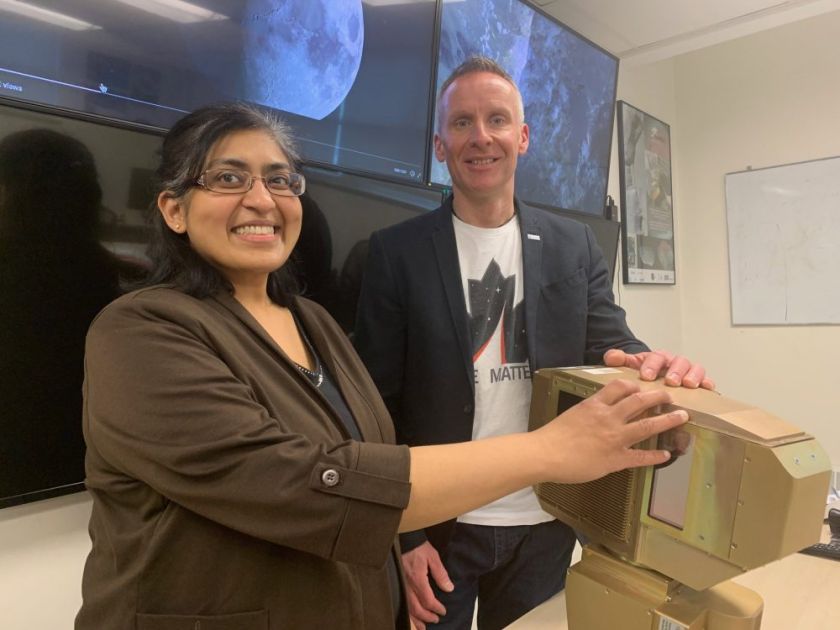Western Professor Jayshri Sabarinathan and Western Space Director Gord Osinki show off a prototype of a camera that will one day be a part of international missions to the moon. (HEATHER RIVERS, The London Free Press)
Western University researchers have an inside track on developing sensory technology that could be used on future space missions.
A team led by the university’s space director Gordon Osinski was chosen by the Canadian Space Agency to develop an “integrated vision system” for rover missions, Western announced Tuesday.
Osinski describes the technology — that would document the surface of the moon and help select samples to bring back to Earth — as the “eyes” of the lunar rovers that could be launched during the next few years.
“One of our ultimate goals is building hardware and launching it into space and being involved in space missions,” he said. “Getting this contract is the first step to — hopefully, eventually — building a camera system that will go on a rover on the surface of the moon.”
The $700,000 contract will fund a team of research scientists, post-doctoral students and graduate students from the faculties of science and engineering which will work on developing the system.
The camera system would use imaging technology to overcome the lack of sunlight on the moon to collect data and help guide and control the rover.
“We’ve been working on a number of concepts for science instruments for over a decade here at Western. A lot of them do revolve around imaging systems,” Osinski said.
The team’s work during the next 18 months will be designing technology that will survive the rigours of space, he said.
“When we build a space camera, it will be multimillions of dollars, everything space-qualified to withstand extreme temperatures and the radiation in space,” Osinski said. “So, we’re designing this concept with that in mind.”
The team’s mission is to advance the design and technology to a point where they have a prototype “cemented in stone” so they can seek additional funding, he said.
The university’s funding from the Canadian Space Agency comes from a five-year $150-million program to help small and medium-sized businesses develop technologies to be used in lunar orbit and on the moon’s surface.
Western will work with MDA Vision Systems and Sensors on the project.
The university launched the Institute for Earth and Space Exploration last summer with a goal of becoming an international hub for Earth and space exploration research, development and training.
“The institute has taken us to the next level. It signifies that space is an important area across campus,” Osinski said. “This (contract) really established Western as an epicentre for space exploration, research and exploration.”
NASA has committed to return humans to the moon by 2024 in a program known as Artemis. The U.S. space agency also has set a goal of landing on Mars by the 2030s.
Canada has agreed to take part in the NASA-led effort by contributing a smart robotic system to the NASA’s lunar gateway program.











